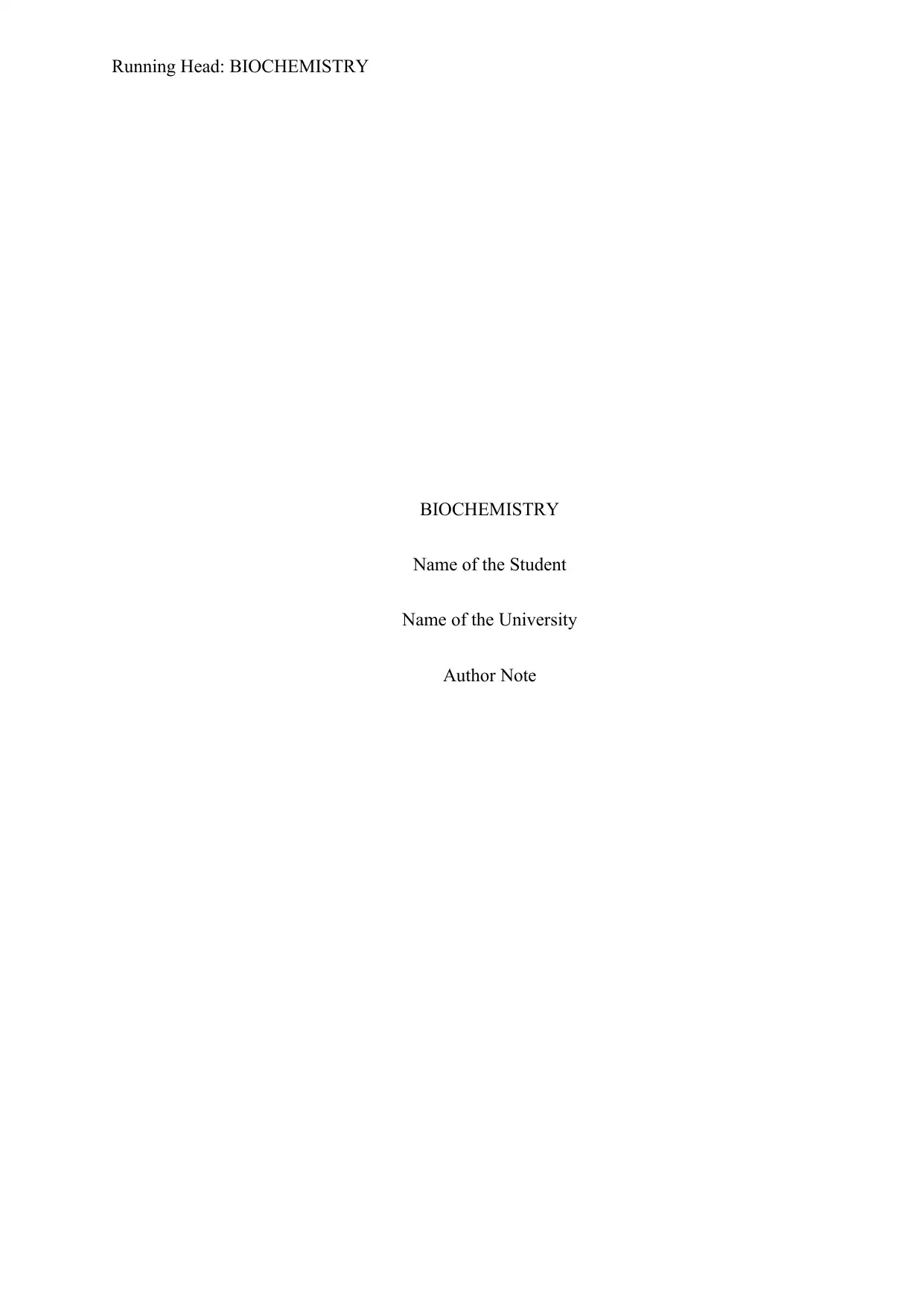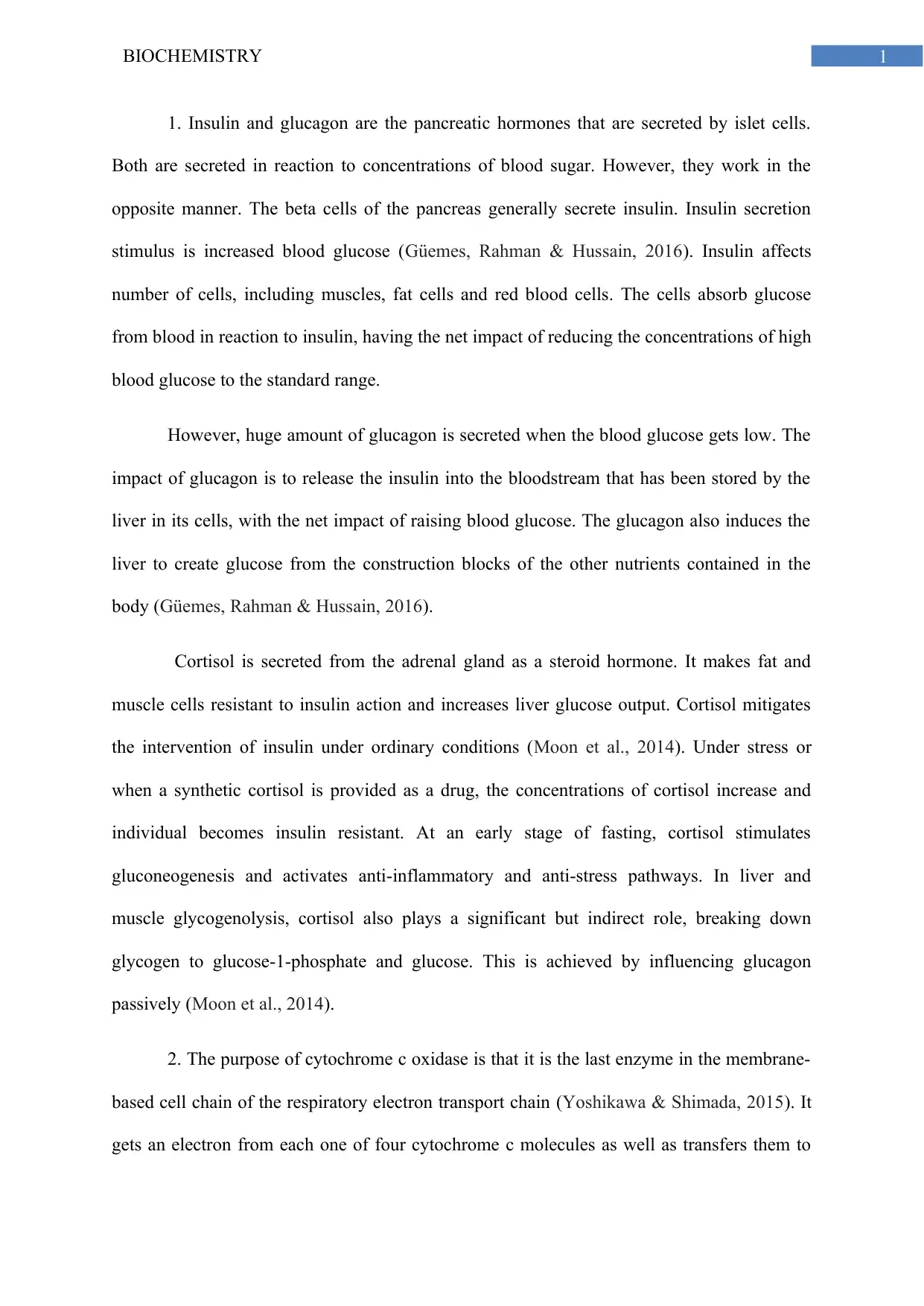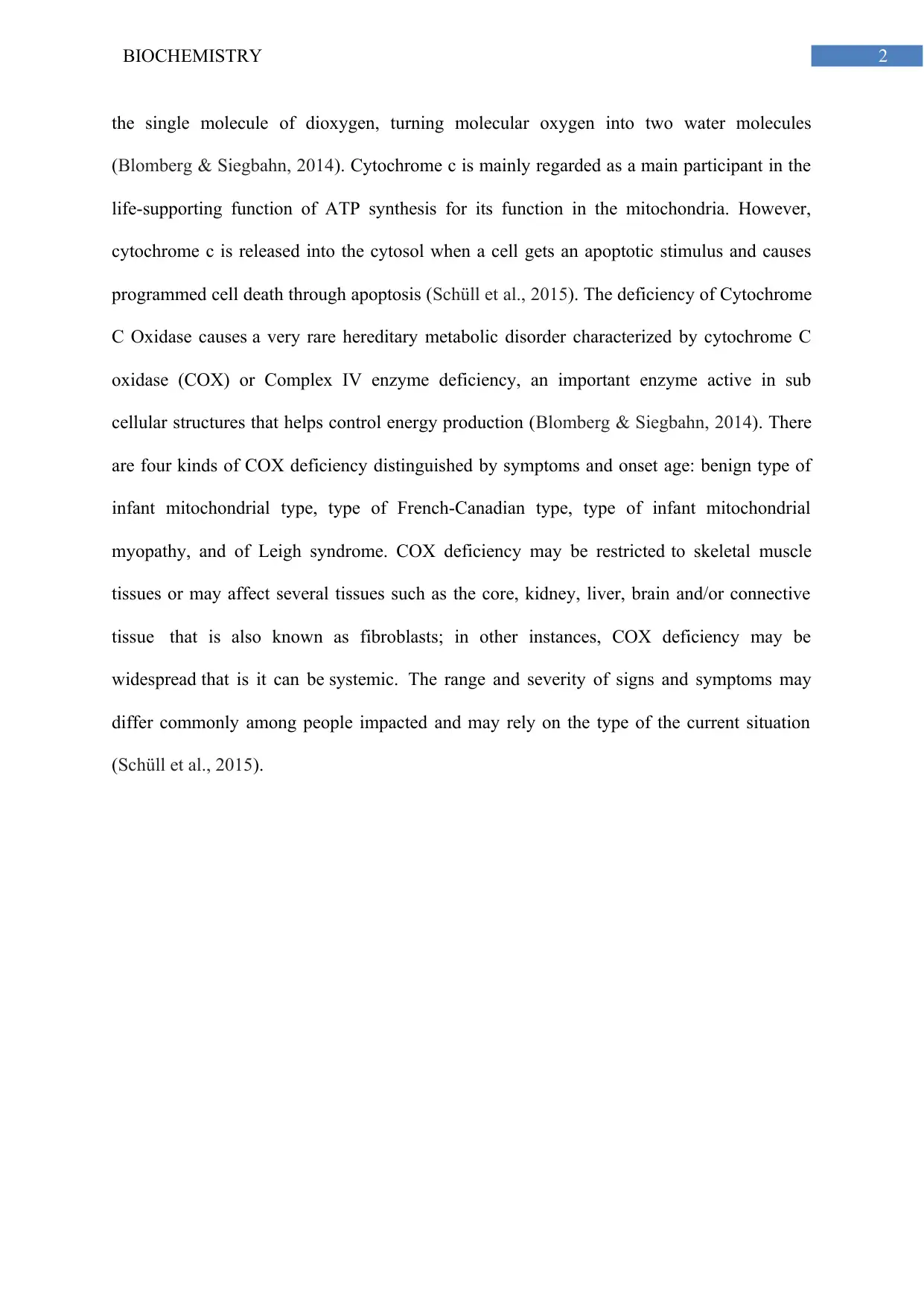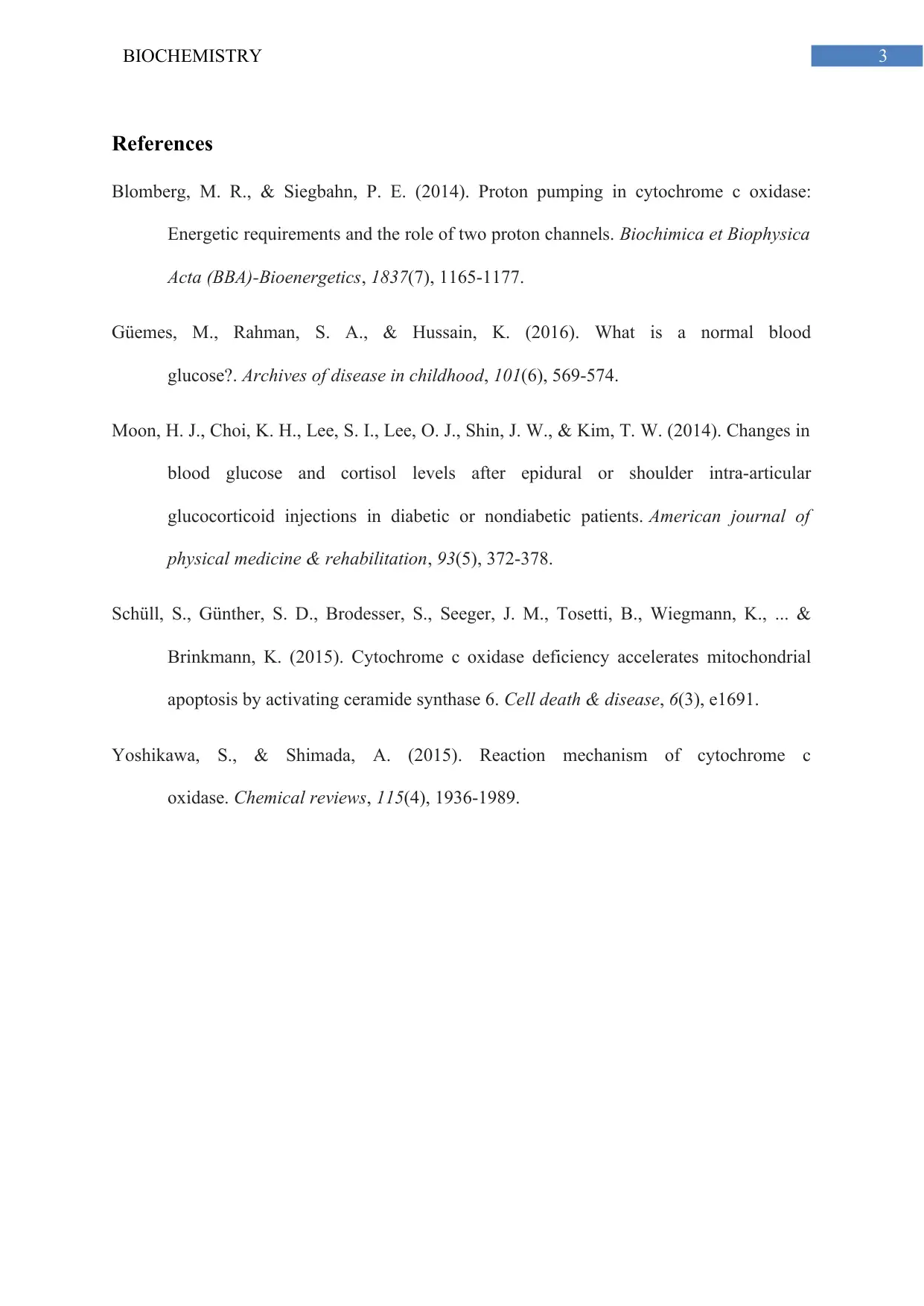Biochemistry 1 Assignment: Hormone and Enzyme Roles in Metabolism
VerifiedAdded on 2022/09/18
|4
|867
|22
Homework Assignment
AI Summary
This biochemistry assignment explores the roles of insulin, glucagon, and cytochrome c oxidase. The assignment begins by detailing the function of insulin and glucagon as pancreatic hormones, highlighting their opposing roles in regulating blood glucose levels. Insulin, secreted by beta cells, lowers blood glucose, while glucagon raises it. Cortisol's impact on insulin resistance and gluconeogenesis is also discussed. The second part of the assignment focuses on cytochrome c oxidase, the final enzyme in the respiratory electron transport chain, and its crucial role in ATP synthesis. The assignment explains how cytochrome c oxidase transfers electrons to oxygen and the implications of its deficiency, including various types of COX deficiency with varying symptoms and severity, affecting multiple tissues and potentially leading to severe metabolic disorders. The assignment is supported by cited references that provide more in-depth information on the subject matter.
1 out of 4





![[object Object]](/_next/static/media/star-bottom.7253800d.svg)